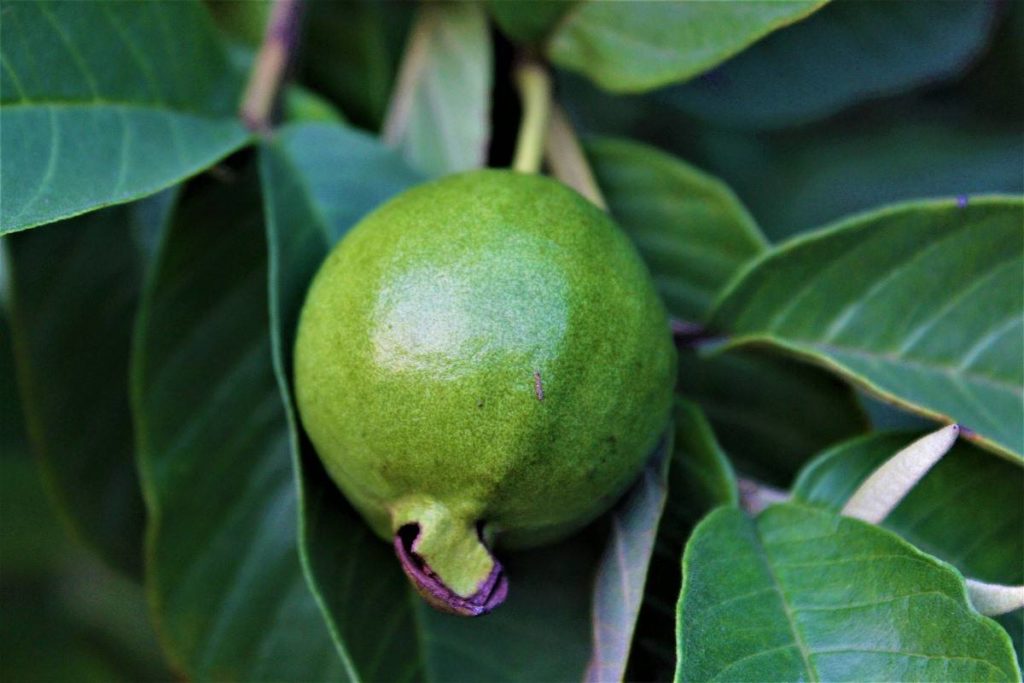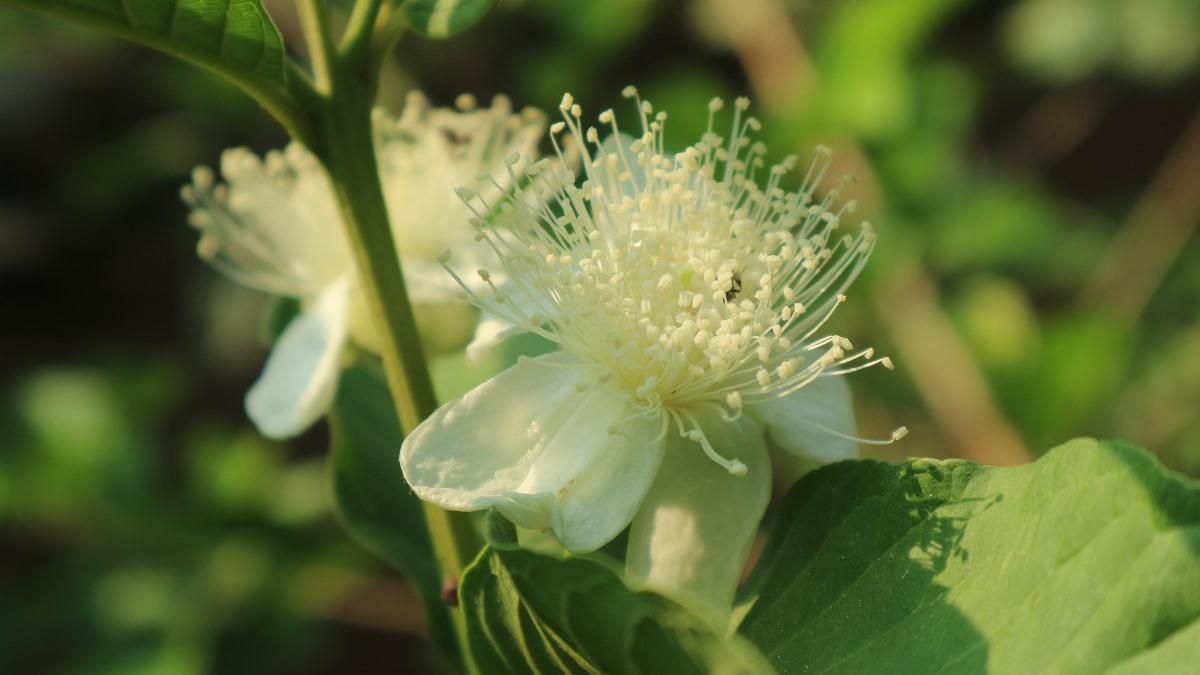Growing Dwarf Guava At Home
Here, today in this article we are going to discuss growing Dwarf Guava at home.
Topics going to cover in this article;
- Introduction to growing Dwarf Guava at home.
- Benefits of Dwarf Guava.
- How to plant Dwarf Guava?
- Propagation of Dwarf Guava from seeds at home.
- Propagation of Dwarf Guava from cuttings at home.
- Propagation of Dwarf Guava from air layering at home.
- Where to plant Dwarf Guava plant?
- Suitable container for Dwarf Guava plant at home.
- Soil requirement for Dwarf Guava at home.
- Water requirement for Dwarf Guava.
- Pruning of Dwarf Guava.
- Mulching for Dwarf Guava.
- Fertilizers recommended.
- Flowers and pollination.
- How to make a tree to bear fruit?
- Protecting the Dwarf Guava tree from low temperatures.
- Pests and diseases of Dwarf Guava and its management.
- Harvesting.
A Step-By-Step Guide to Growing Dwarf Guava At Home
The Dwarf Guava tree may be highly attractive. The leaves and flowers are both mildly fragrant and attractive to the Dwarf Guava tree. It is a high yield of a shrub. The Dwarf Guava tree, if grown in-ground will grow up to a height of 12 feet in tropical regions. The tree will grow to a smaller size if you plant it in a container or pot. The tree produces 1-inch white size flowers, which are very attractive. The Dwarf Guava fruits are about 5 inches in diameter; either round, oval, or pear-shaped, or therefore the ripe fruit features an upscale pungent smell that spreads quickly within the house. The Dwarf Guava fruit has pink yellow, white flesh having seeds at its center. The taste of the fruit varies from sour to sweet, counting on its variety. You can plant Dwarf Guava trees in your patio, backyard, and even in containers.
Benefits of Growing Dwarf Guava
There are many health benefits of having Dwarf Guava. Some of them are listed below;
- Having Dwarf Guavas may be good for your skin.
- Having Dwarf Guava may benefit be for your digestive system.
- Having Dwarf Guava may boost your heart health.
- Having Dwarf Guava may help to lower your blood sugar levels
You can even have organic guava by planting this Dwarf Guava in your home.
How to Plant Dwarf Guava?
Dwarf Guava propagation can be done in three different methods. They are;
- Seedling,
- Cutting,
- Air layering.
From seeds, guava grows very fast if you take proper care.
Propagation for Growing Dwarf Guava from Seeds At Home
Dwarf Guava seeds are propagated easily with a high germination rate. The most important thing is that they need to be fresh and obtained from the standard source. You can also use seed fresh seeds collected from the fruit but it’s better to shop for seeds from a seed store or in any online store.
If you want to use seeds obtained from Dwarf Guava fruit for propagating them. Firstly, rinse them in water, which isn’t very cold then wrap the seeds of Dwarf Guava in a cloth and dry them for a few hours. Then pour them in a cup of warm water and soak the seeds for 3-4 hours again. Prepare a pot crammed with seed starting mix, and sprinkle seeds in it. Now put the pot on a warm, well-lit spot, sort of a windowsill. To hurry up germination, you can install cellophane over the top of the container.
Propagation for Growing Dwarf Guava from Cuttings At Home
When you’re choosing Dwarf Guava cuttings, it’s better to select a healthy stem for propagation. Root cutting propagation is another best method of producing new dwarf guava trees. The roots of guava trees that grow near the surface are very small to put up new shoots. Dig up the tree and cut off a 5 to 6 cm. tip from one of these roots and cover it with a fine layer of rich and very moist growing medium. After a few weeks, new shoots should emerge from the soil. Each new shoot can be separated and grown into its Dwarf Guava tree. This method should only be used if you recognize the parent tree was grown from a cutting and not grafted onto a special rootstock. Otherwise, you might get something very different from a Dwarf Guava tree.
Propagation for Growing Dwarf Guava from Air Layering At Home
Air-layering is the commercial method in practice for the propagation of guava. The foremost ideal time for air layering in guava is between April and June within the warm and humid climate, when the typical temperature varies between 29.3 and 30.5°C and ratio between 69.0 and 80.0%. As hoot from the previous year’s growth of 1cm in diameter is chosen for air-layering. A hoop of bark about 3cm long is removed. This area is roofed with wet sphagnum and tied with polyethylene film. The rooting takes place in about 30-40 days.
Where to Plant Dwarf Guava Plant?
Dwarf Guava plant needs full sun to part shade to grow; however, it cannot withstand an excessive amount of heat. The guava plants have little or no tolerance for cold. The plant is the young may die. The new leaves start to grow from the start of spring.
Suitable Container for Growing Dwarf Guava Plant At Home
Dwarf Guavas are often planted in pots and ground also. If you’re planning to plant in a container, and then select a medium pot, a minimum of 30 cm (12 inches) pot, bigger is best. The potted Dwarf Guava plants are often pruned in early summer to stay the dimensions compact. Transfer the young guava plant every spring into a bigger pot.
The pot should have good drainage holes at rock bottom, which is vital to guard the roots.
Soil Requirement for Growing Dwarf Guava At Home
- Seasonal Flower Gardening: Best Practices for Spring, Summer, Fall, and Winter
- How to Grow Hibiscus from Flower
- Plantation Ideas for Home Decoration: A Beginners Guide
- Flower Garden Designs and Layouts for Beginners
- Planting and Spacing Techniques in Papaya: A Beginner’s Guide
- Growing Gold: Essential Techniques for Planting Pineapples

Plant your Dwarf Guava in rich well-draining soil having a pH of 4.5-7.0. Add well compost and manure to the soil and a few river areas of sand to make it free-draining soil. This sort of soil is best for growing Dwarf Guava trees faster.
Water Requirement for Growing Dwarf Guava
Allow the soil to dry out somewhat between watering, because Dwarf Guava prefers regular deep root water. Provide regular water during the season, and reduce watering during the winter. Apply water at the bottom of the tree, avoiding its foliage getting wet to stop the fungal disease. The older branches of the Dwarf Guava tree produce larger guava fruit. So to develop the branch growth, the tree must receive regular water.
Pruning of Dwarf Guava
Pruning a Dwarf Guava tree is vital if you would like your tree to supply many fruits. Prune the new guava plant at 1-2 feet length to supply new lateral branches. Allow such 3-4 pruned branches to grow to 2-3 feet long. Then cut the ideas of those branches to grow more branches. Remove the weak branches. The tree during this way will become dense with an honest canopy.
Mulching Requirement for Growing Dwarf Guava
Mulching is done with 2-6 inches of wood chips, bark to retain soil moisture. Keep the mulch-10 inch far away from the trunk. Mulch also can reduce the expansion of weeds and may help reduce the danger of certain pests.
Fertilizers for Growing Dwarf Guava Plant
The Dwarf Guava tree fertilizer is extremely important if you would like to grow your guava tree fast.
Dwarf Guava tree is a heavy feeder plant, so it should be fertilized every 1-2 months in the starting stage of growth. After its growing stage, you need to fertilize them for 2-3 years. Dwarf Guava trees need a few magnesium for maximum fruit production and fertilizer which is high in phosphorus, potash, nitrogen. At the beginning of the season mix 6-6-6-2 fertilizer into soils then 3-4 times during the expansion period. A fertilizer that is high in potassium is the best fertilizer for Dwarf Guava trees to extend their fruit production.
Note: The heavy salt contained fertilizers may damage your plant’s growth and it can also kill the plant. So, choose the best brand of fertilizers for better growth of the plant.
Flowers and Pollination of Growing Dwarf Guava Plants
The Dwarf Guava tree blooms in early spring, but it may bloom all year in mild climates. Dwarf Guava tree has perfect flowers with male and female parts in each flower of it. Honeybees pollinate the guava flowers.
In case if you miss this: Growing Organic Lettuce.

You can hand pollinate flowers if there are no bees in your area. Use a very small paintbrush and tickle the inside of flowers to pollinate them.
Spraying a 5% solution of urea mixed with a wetting agent just before flowering. Water the plant, when the urea spray dries. This will increase the duration of fruit production for your Dwarf Guava.
How to Make Tree to Bear Fruit?
A new Dwarf Guava tree can start bearing fruits when it is 2 years old. If your guava tree has matured and not flowering then you can encourage your tree to flower as following:
- Allow your tree to dry out for 2-3 weeks and prune the tips of the branches to stimulate new growth. Then your Dwarf Guava will flower on the new growth.
- Restriction of water causes the tree to begin reproduction defense mechanisms that result in the flowering of the tree.
Protecting Dwarf Guava Tree from Low Temperatures
To protect your Dwarf Guavas from freezing temperatures, cover them with a blanket. If the guava tree is growing in a pot or the container, then move the container to the shade place or verandah.
Pests and Diseases of Dwarf Guava and Its Management
- Young Dwarf Guava is attacked by several pests including aphids, guava white fly, mealy bugs, moth, scale, and thrips. Treat early. To prevent fruit fly, cover the fruits with a paper bag.
- The Dwarf Guava tree is attacked by several diseases like anthracnose, red alga, and leaf spots. Pruning of Guava tree will have benefit of getting good air circulation for roots. To control these diseases use regular copper spray, pest oil spray, or insecticidal soap.
- Ants crawling on the guavas may be a problem, sometimes. Use Boric Acid Ant Baits to control ants on the guavas.
Harvesting of Guava Fruits
After the flowers of Dwarf Guava blooms, the fruit matures in 2-4 months. The fruit of Dwarf Guava remains hard and green but changes color and becomes softer when it is ripe. If you store the green-colored fruits at room temperature then they will ripen much earlier.
Note: The above information may be useful for growing Dwarf Guava on the Terrace, Backyard, Balcony, Polyhouse, and Greenhouse.